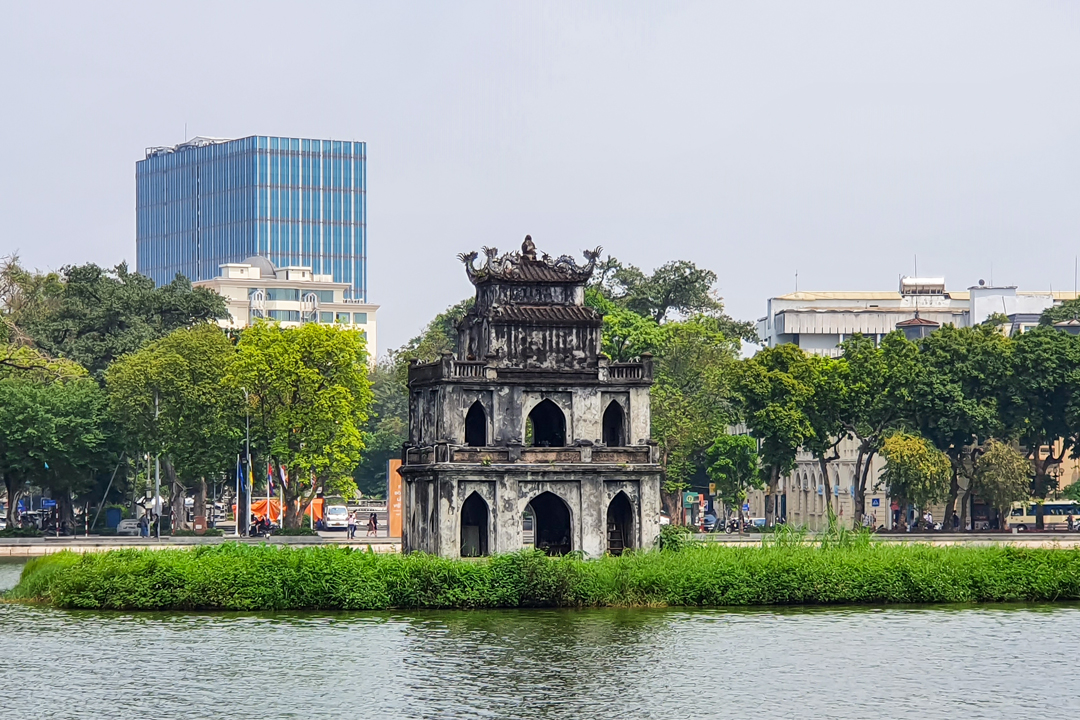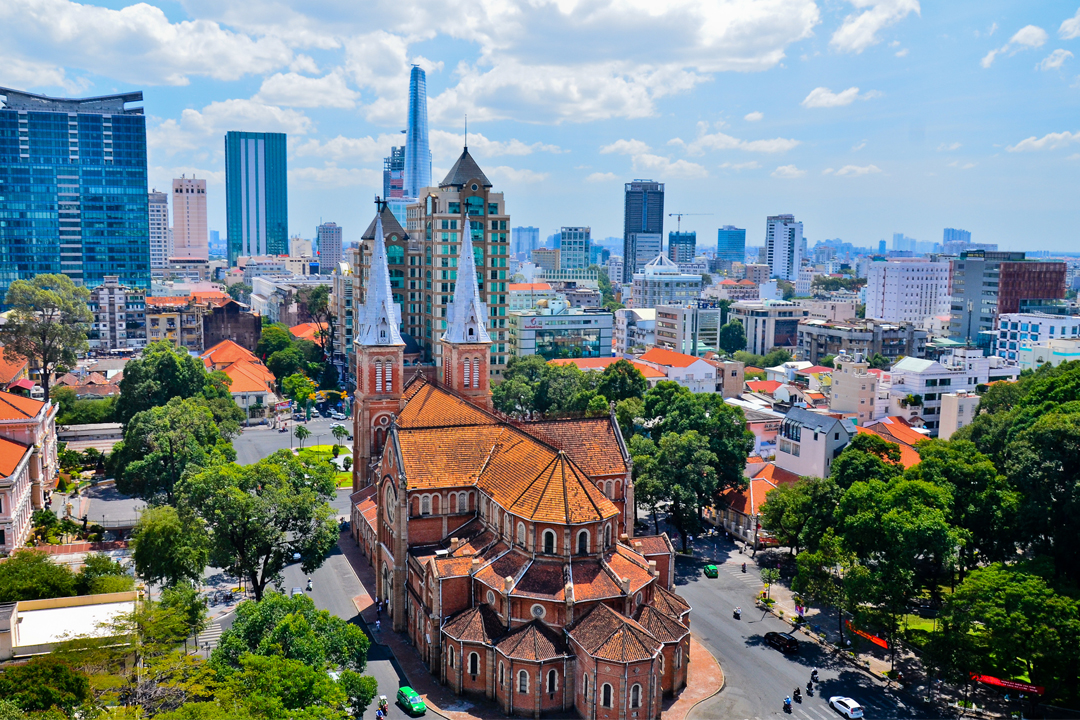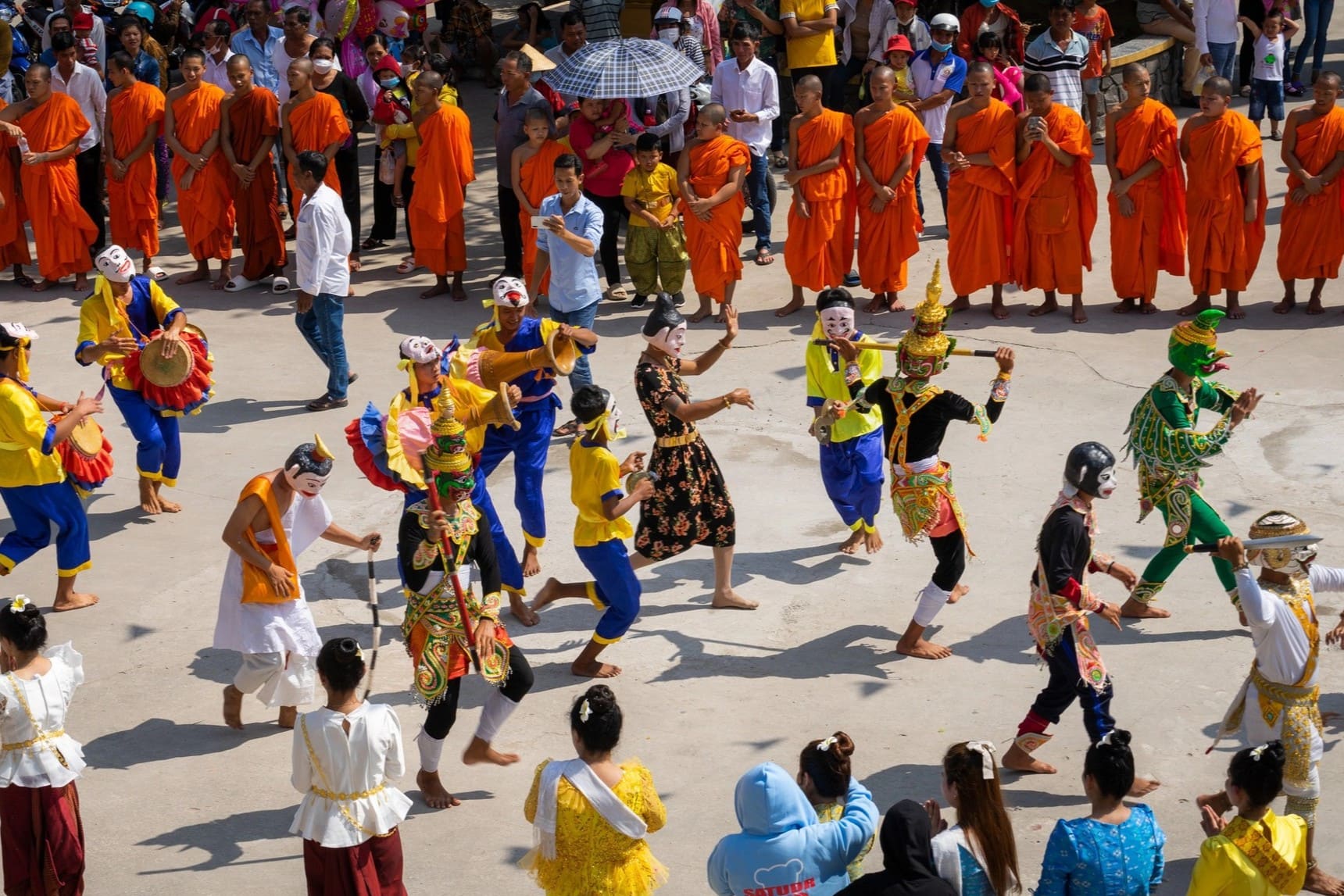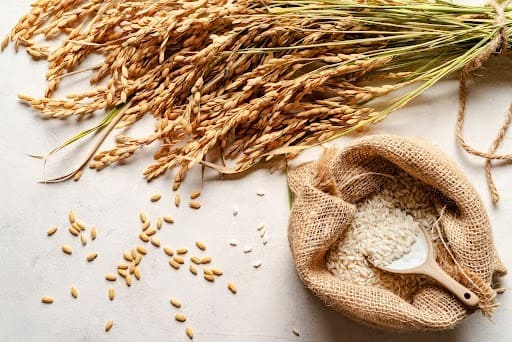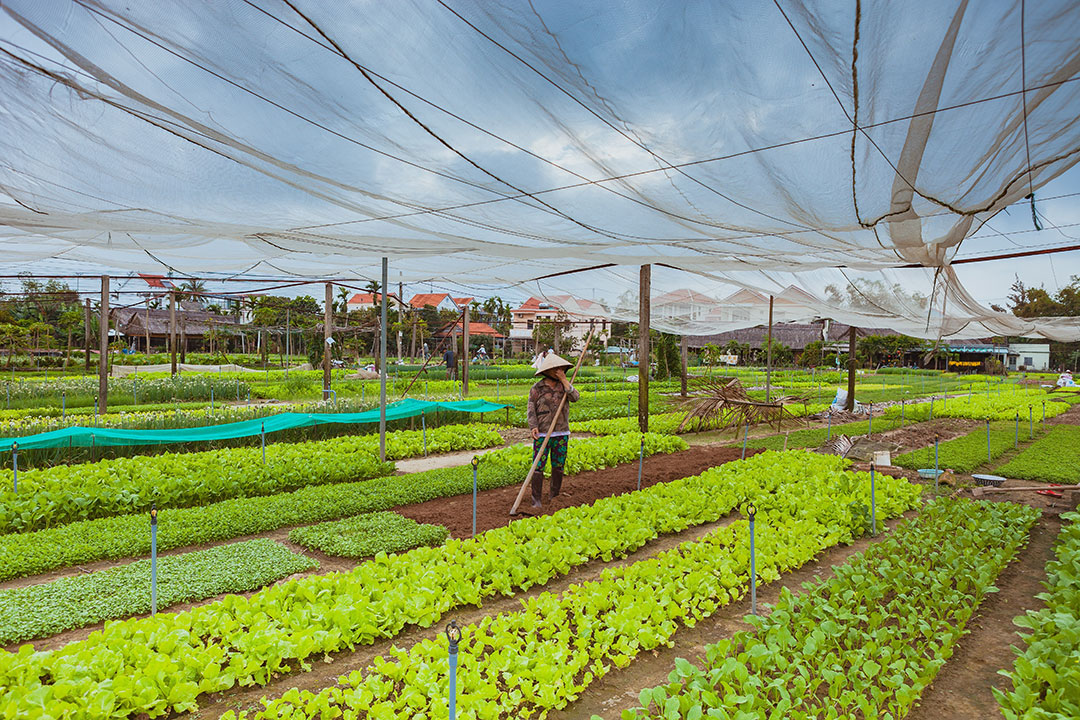Tra Que Herb Village: Overview, History, Things To Do & Travel Guide
Imagine stepping into a verdant oasis where the air is infused with the alluring aroma of fresh herbs, this is Tra Que Herb Village. Located just a stone's throw from the captivating Hoi An Ancient Town, the village showcases Vietnam’s rich agricultural heritage and sustainable farming practices. In recognition of its cultural and ecological value, Tra Que was named one of the “Best Tourism Villages” by the UNWTO in November 2024.
Here, local farmers cultivate aromatic herbs using traditional methods and seaweed from the De Vong River, a time-honored technique that shapes Hoi An’s signature flavors. Explore with us as we uncover deep-rooted farming traditions and the secrets behind these fragrant fields. Ready to turn your curiosity into a flavorful adventure?
Overview of Tra Que Herb Village
Just 4 km northeast of Hoi An Ancient Town, Tra Que Herb Village offers a peaceful retreat into Quang Nam’s lush countryside. Famous for its fragrant herbs like mint, basil, and perilla, the village showcases traditional Vietnamese farming methods, using organic seaweed from the De Vong River to enhance flavor. It’s a scenic stop, and it’s a living example of sustainable agriculture and local culinary heritage.
Unique characteristics and features
Unique to Tra Que is its commitment to organic farming methods, a practice rooted in traditional knowledge and a deep respect for the land. This commitment is manifested through several defining characteristics:
- Using organic fertilizers: Locals only use manure and various types of riverweed collected from the De Vong or Thu Bon Rivers to fertilize the vegetables. The riverweed decomposes quickly, helping to loosen the soil, retain moisture, and provide natural nutrients for the plants. Due to the high demand for fertilizer, they also purchase additional manure from nearby areas such as Duy Xuyen and Dien Ban.
- No chemical use: Tra Que vegetables are grown entirely using organic methods, with no chemical fertilizers and only minimal use of pesticides. This ensures the produce is clean, safe for consumers’ health, and environmentally friendly.
- Native vegetable varieties: The village preserves and cultivates traditional vegetable strains that have existed for hundreds of years. These varieties are known for their distinctive flavors, are well-suited to the local soil, are naturally resistant to pests, and yield stable harvests.
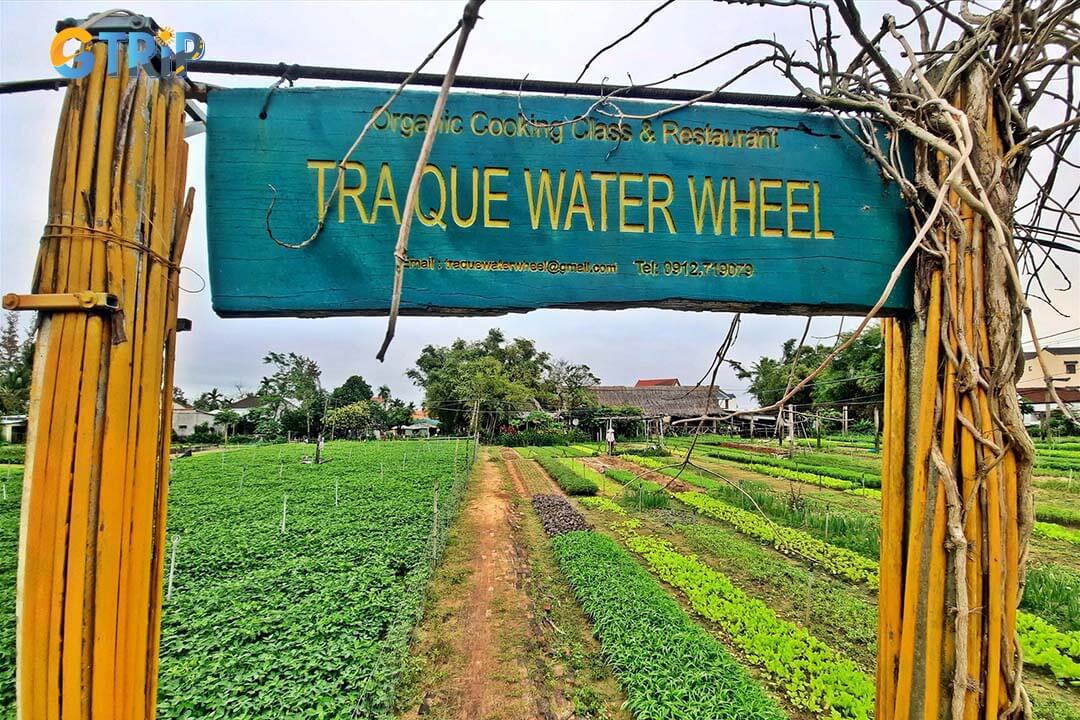
Tra Que Herb Village is a tranquil escape near Hoi An, where fragrant herbs and time-honored farming reflect Vietnam’s rich culinary and agricultural traditions
How does it stand out from other villages in Vietnam
Tra Que stands out for blending traditional heritage with modern sustainable practices. While many areas excel in agricultural output, Tra Que distinguishes itself through:
- Integration of tourism and agriculture: By capitalizing on its agricultural heritage, Tra Que has seamlessly integrated tourism as a supplementary economic activity for the community. This symbiotic relationship not only boosts the local economy but also helps preserve farming traditions through shared experiential learning.
- Commitment to eco-tourism: In an era where environmental concerns are paramount, Tra Que's eco-tourism model is a shining example of how rural communities can thrive sustainably. Through activities designed to educate and engage tourists in organic farming practices, the village nurtures a global understanding of responsible resource use.
- Cultural legacy: The historical context of the region - one that has seen centuries of farming innovation and cultural evolution - adds a layer of depth to the village’s narrative. This rich history enhances the visitor experience, offering a culturally immersive journey that is as informative as it is enjoyable.
Tra Que Herb Village, with its lush green fields and aromatic gardens, invites visitors to participate in a lifestyle that harmonizes with nature. More than just a village, it’s a living museum of heritage, preserving the past while embracing a sustainable future.
The history and heritage of Tra Que Herb Village
Tra Que Herb Village, located in Hoi An city, Quang Nam Province, has a long and rich history dating back over 300 to nearly 400 years, originating in the 16th century. Initially, it was a fertile area of alluvial soil along the Co Co River, with sandy loam soil and a mild climate ideal for cultivating clean and aromatic vegetables.
The name "Tra Que" comes from a legend in the 18th century when Emperor Gia Long, during a boat trip on the De Vong River, visited the village. He was impressed by the unique aroma of the vegetables, which resembled the fragrance of tea ("Tra") and the spicy scent of cinnamon ("Que"), and thus named the village Tra Que. Previously, the village was called Nhu Que, referring to the distinctive fragrant herbs grown there, including cinnamon-like plants.
Tra Que developed a traditional organic vegetable farming practice that avoids chemical fertilizers and pesticides. Villagers use manual methods and organic fertilizers to preserve local vegetable varieties and centuries-old farming traditions. Historically, villagers dug ponds and canals to irrigate their vegetable gardens, integrating water features harmoniously with their homes, creating a unique landscape. In the last 2 decades, the village has been reorganized into neat square plots and straight pathways to support tourism while maintaining traditional cultivation methods.
Today, Tra Que is a hub for clean produce and eco-tourism, drawing thousands to experience traditional farming and local cuisine. In 2022, Tra Que’s vegetable farming craft was officially recognized by Vietnam’s Ministry of Culture, Sports and Tourism as a National Intangible Cultural Heritage. This recognition, under the category of “Folk knowledge and traditional handicrafts”, affirms its cultural and historical significance.

Tra Que Herb Village, a historic agricultural hub in Hoi An, is renowned for its aromatic organic vegetables and cultural heritage
5 things to do when visiting Tra Que Herb Village
Tra Que Herb Village invites visitors to experience authentic rural life through hands-on farming, traditional cooking, and time-honored wellness rituals. These activities are all rooted in centuries of organic practice and local heritage.
1. Capture beautiful photos in the village
Tra Que Herb Village boasts lush natural landscapes, neat rows of vegetables, small shaded paths, and traditional houses full of rustic charm. It is an ideal place for visitors to unleash their creativity and take stunning photos, from scenic landscapes to portraits that capture the authentic atmosphere of Vietnam. The soft natural light combined with the vibrant green of the vegetables creates a perfect backdrop for lively and vivid images. Additionally, candid moments of villagers working, planting, watering, or harvesting. It offers genuine, emotional scenes to capture. Taking photos in Tra Que not only preserves your memories but also helps promote the cultural and natural beauty of this unique place to a wider audience.
2. Experience a day as a farmer at Tra Que
When visiting Tra Que Herb Village, visitors have the unique opportunity to become a real farmer for a day. You will wear traditional local farming clothes and directly participate in activities such as tilling the soil and sowing seeds. It is fertilised with organic compost made from seaweed and livestock manure, and watering the crops. This hands-on experience helps you understand traditional organic vegetable farming techniques. It allows you to feel the deep connection between the villagers and their land. This experience cultivates patience, meticulousness, and appreciation for honest labor. Additionally, the fresh air and peaceful scenery of the lush green vegetable fields create a relaxing atmosphere, helping you escape the noise and stress of urban life.
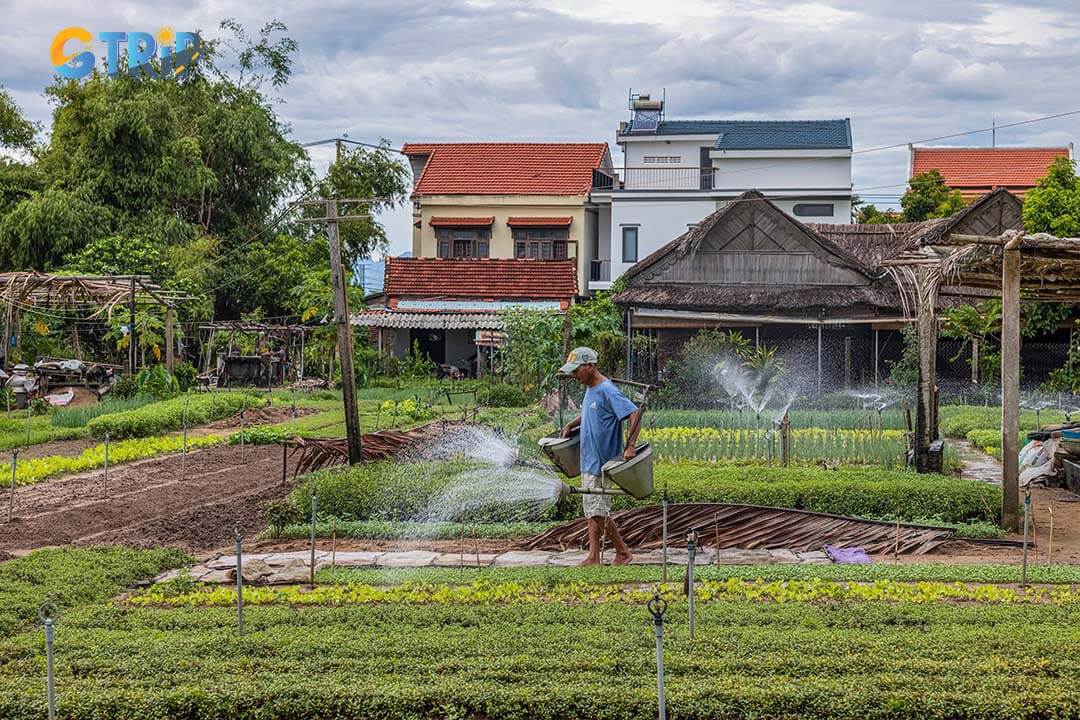
Experience traditional farming at Tra Que Herb Village by sowing seeds, fertilizing with organic compost, and connecting with local farming practices
3. Participate in the Cau Bong Festival for a bountiful harvest
The Cau Bong Festival is Tra Que’s key annual event, held every year on the 7th day of the first lunar month to pray for good harvests, health, and harmony. You can immerse yourself in a solemn yet lively atmosphere with rituals like incense offerings and ceremonies at the Earth God Temple. The celebration also features folk cultural activities such as lion dances, Bai choi singing, and traditional games. This festival expresses the villagers’ gratitude to nature, the land, and their ancestors, while strengthening community solidarity. Visitors actively participate in the rituals and activities, experiencing the rich and profound cultural heritage of the local people.
4. Join a cooking class
After harvesting fresh vegetables right from the garden, visitors can join cooking classes organized by local villagers or chefs in Tra Que. Here, you will learn how to prepare famous traditional Hoi An dishes such as banh xeo, cao lau, mi quang and especially the signature dish of Tra Que, Tam Huu. Tam Huu is a fresh roll of shrimp, pork, and Tra Que herbs, wrapped in green onion stalks and served with sweet-sour fish sauce. The class teaches cooking techniques and shares cultural stories and the significance of each dish in local life. You’ll cook and enjoy your dishes, savoring the fresh flavors and balance that define Tra Que cuisine. This is a fun and meaningful experience that deepens your understanding of Central Vietnam’s culinary traditions and culture.

Join a cooking class in Tra Que to learn how to make traditional Hoi An dishes like Tam Huu while discovering the cultural stories behind each recipe
5. Cycle around the village
Exploring Tra Que by bicycle is a scenic and relaxing way to take in the lush landscape. The flat, quiet roads winding through herb gardens, rice paddies, and lotus ponds offer a peaceful escape from the bustle of Hoi An’s Ancient Town. Along the way, you’ll pass water buffalo, friendly villagers, and traditional wooden homes. It’s also a great opportunity to interact with locals, stop for a sugarcane juice, or capture the postcard-perfect scenes of daily rural life. Cycling allows you to connect more deeply with the environment and uncover the charm of Tra Que at your own pace.
Incorporating these activities into a visit to Tra Que Herb Village allows tourists to gain a deeper understanding of Vietnamese rural life and its interconnection with nature. The eco-tourism model adopted by Tra Que encourages sustainable practices and cultural appreciation, inviting visitors to be active participants rather than passive observers. This approach enhances the visitor experience and supports the community’s economic and environmental goals.
Best times to visit Tra Que Herb Village
Tra Que Herb Village, residing in the tranquil countryside of Hoi An, is best experienced when its environmental and cultural offerings are at their peak. To ensure the most immersive visit, consider planning your trip during the optimal seasons, which are typically from February to April and again from September to December. These months bring mild weather and low humidity, ideal for outdoor activities like farming and cycling tours.
These seasons align with crucial farming cycles in Tra Que, allowing visitors to witness the vibrant growth of herbs and vegetables. During early spring and autumn, you will find fields lush and green due to the concentration of seaweed fertilization, which enhances the growth and aroma of the herbs. Also, these months avoid the intense heat of summer and the heavy rains of November to January, ensuring more comfortable exploration and photography opportunities.
According to many sources, the entrance fee to Tra Que Herb Village is about 35,000 VND/person/day (~$1.36) for both sightseeing and agricultural activities. But to be more sure, you can ask the locals here to know the specific price.

Visit Tra Que Herb Village from February to April or September to December for the best weather, vibrant herb growth, and an immersive experience in farming
How to get to Tra Que Herb Village?
Tra Que Herb Village is located about 3 kilometers northeast of Hoi An Ancient Town in Cam Ha Commune, Quang Nam Province. Known for its lush herb gardens and eco-tourism activities, this village is easily accessible by various modes of transportation, whether you're coming from Hoi An or other cities.
From Hoi An Ancient Town
1. By bicycle
Cycling is one of the most popular and eco-friendly ways to reach Tra Que Herb Village.
- Route: Start from Hoi An Ancient Town and follow Hai Ba Trung Street, which leads directly to the village.
- Distance: Approximately 3 kilometers, taking 20-30 minutes depending on your pace and stops.
- Experience: The route offers scenic views of rice paddies, rivers, and local life. You can stop at small cafés or shops along the way for refreshments.
- Cost: Bicycle rentals are available in Hoi An for 20,000-40,000 VND (about $0.85-$1.70) per day.
2. By motorbike or car
You can drive or hire a motorbike, or car for a quicker option.
- Route: Take Phan Chau Trinh Street out of Hoi An and continue to the village on Hai Ba Trung Street.
- Travel time: 10-15 minutes by motorbike or car.
- Parking: Parking spaces are available near the village entrance to preserve the gardens.
From Da Nang
Da Nang is the nearest major city to Tra Que Herb Village, located around 45 kilometers away.
1. By taxi or private car
- Route: Take the coastal Son Tra - Dien Ngoc Road (Vo Nguyen Giap Street) heading south toward Hoi An. After reaching Hoi An, follow the directions above to Tra Que.
- Travel time: Approximately 40-60 minutes.
- Cost: Taxi fares range from 400,000-500,000 VND (about $17-$21.50) depending on traffic and service.
2. By motorbike
- Route: Follow the same coastal road as above for a scenic ride along the beach before heading inland toward Tra Que via Hoi An.
- Travel time: About 40-50 minutes.
3. By bus
- Public buses run between Da Nang and Hoi An regularly (costing around 30,000 VND or about $1.30). From Hoi An bus station, you can take a taxi or rent a bicycle/motorbike to reach Tra Que.
Note: If you're traveling from cities further afield like Hue, Nha Trang, or Ho Chi Minh City you need to fly to Da Nang International Airport, which serves as the closest major hub.
Travel tips when visiting Tra Que Herb Village
Here are some essential travel tips to ensure an enriching and comfortable experience when visiting Tra Que Herb Village:
- Provide constructive feedback: Offer thoughtful feedback about your experiences to help local enterprises improve and meet eco-friendly tourism standards. Your feedback benefits future tourists and the community
- Dress appropriately: Wear light, breathable, and comfortable clothing suitable for outdoor activities. Long sleeves and pants can protect against the sun and insects, and footwear should be practical for walking and light farming tasks. You shouldn't forget a wide-brimmed hat to shield yourself from the sun.
- Protect yourself from the sun: The Vietnamese sun can be strong, especially during midday. Wear hats, sunglasses, and apply broad-spectrum sunscreen regularly to protect your skin and eyes during your visit.
- Stay hydrated: It's essential to stay hydrated, especially if you're participating in physical activities or visiting during warmer months. Bring a reusable water bottle and refill it throughout your visit to minimize plastic waste.
- Book in advance: Secure your spot on your desired tour and avoid last-minute complications by booking several weeks ahead of your visit. This is especially important during peak tourist seasons.
- Carry local currency: While some tours may accept major currencies or credit cards, having Vietnamese Dong (VND) on hand is useful for small purchases, tips, and sampling local products. Smaller vendors and farmers may prefer cash transactions.
- Respect the environment: Support sustainable practices by following eco-friendly guidelines. Limit plastic waste, conserve water, and avoid disturbing the natural environment during your visit to help maintain the pristine beauty of the village.
- Engage actively: Participate in farming and cooking activities to enhance your experience and support local initiatives. Participation fees often directly support the families involved in these traditional practices.
- Support local products: Purchase herbs, vegetables, and souvenirs directly from the village to ensure that financial benefits reach the local community. This encourages them to continue their sustainable practices and preserve their cultural heritage.
By following these travel tips, visitors can fully immerse themselves in the serene agricultural life of Tra Que Herb Village. This also helps contribute to the sustainable preservation of this cherished Vietnamese cultural landscape.

Essential travel tips for Tra Que Herb Village
Tra Que Herb Village provides an essential understanding of the intertwined relationship between agriculture and culinary arts in Vietnam. Encouraging a visit to this authentic village is not just about tasting fresh herbs; it is about engaging with a heritage that has been nurtured and preserved through generations. Here, visitors savor not just the flavor, but the story of Tra Que, a story best experienced firsthand under the serene, fragrant canopy of this vibrant herb sanctuary. Don't miss the chance to add Tra Que Herb Village to your Hoi An itinerary! Plan your visit with GTrip – Vietnam Travel Agency, your trusted local expert for immersive, authentic experiences across Vietnam.

